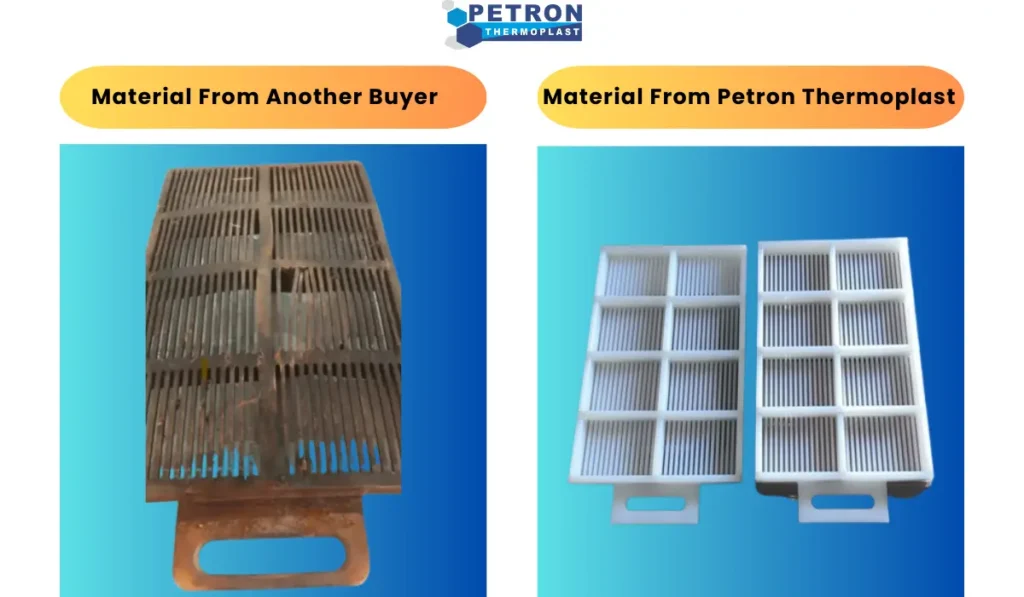Semiconductor manufacturing is one of the most intricate and technologically advanced industries today. As electronic devices become more sophisticated and compact, the demand for ultra-pure materials and contamination-free manufacturing environments has significantly increased. One crucial component in maintaining these high standards is Polyvinylidene Fluoride (PVDF) filters. These high-performance filters are essential for removing particulates and contaminants from liquids and gases used in semiconductor fabrication, ensuring the highest level of purity required in the industry.
In this article, we will explore the growing demand for PVDF filter in semiconductor manufacturing, their benefits, applications, and why they are becoming the preferred choice for filtration in this high-tech sector.
Why is Filtration Critical in Semiconductor Manufacturing?
Semiconductor production requires an ultra-clean environment to prevent defects in microchips and other electronic components. Any contamination, even at microscopic levels, can lead to lower yields, device failures, and increased production costs. The filtration of chemicals, ultrapure water, and gases used in the manufacturing process is a critical step to ensure the integrity of semiconductor products.
PVDF filters play a vital role in this process by providing exceptional chemical resistance, high thermal stability, and superior filtration efficiency. They effectively remove sub-micron particles, bacteria, and unwanted chemicals from process fluids, ensuring the purity required for semiconductor fabrication.

Key Advantages of PVDF Filters in Semiconductor Applications
1. Superior Chemical Resistance
PVDF is known for its outstanding resistance to harsh chemicals, including acids, bases, and organic solvents. Semiconductor manufacturing involves the use of aggressive cleaning agents and chemicals like hydrofluoric acid, sulfuric acid, and hydrogen peroxide. PVDF filters remain stable and efficient in these harsh environments, making them the preferred choice for filtration in chemical handling processes.
2. High Thermal Stability
The semiconductor industry requires filtration systems that can operate under extreme temperature conditions. PVDF filters offer excellent thermal stability, withstanding temperatures up to 150°C (302°F), ensuring reliable performance even in high-temperature chemical baths and etching processes.
3. Low Extractables and High Purity
PVDF filters release minimal extractables, which means they do not leach contaminants into the filtered fluids. This ensures that the purity of ultrapure water (UPW) and chemicals used in semiconductor manufacturing is maintained, reducing the risk of defects in microelectronic components.
4. Hydrophobic and Hydrophilic Properties
PVDF filters are available in both hydrophobic and hydrophilic forms. Hydrophobic PVDF filters are used for gas filtration, while hydrophilic PVDF filters are ideal for liquid filtration. This versatility makes them suitable for multiple applications in semiconductor manufacturing.
5. High Filtration Efficiency
PVDF membranes have uniform pore structures that enable them to capture fine particles and microorganisms effectively. With filtration capabilities down to 0.1 microns, they help maintain ultra-clean production environments in semiconductor fabrication plants.
Applications of PVDF Filters in Semiconductor Manufacturing
PVDF filters are used in various critical applications in the semiconductor industry, including:
1. Ultrapure Water (UPW) Filtration
Ultrapure water is an essential component in semiconductor fabrication, used for wafer cleaning, rinsing, and etching processes. PVDF filters help remove nanoparticles, bacteria, and organic contaminants, ensuring that UPW meets the stringent purity requirements of semiconductor production.
2. Chemical Filtration
Semiconductor manufacturing relies on a variety of chemicals for etching, doping, and cleaning. PVDF filters are used to purify acids, solvents, and alkaline solutions, preventing contamination and ensuring process reliability.
3. Gas Filtration
Gases such as nitrogen, argon, and hydrogen are widely used in semiconductor production. Hydrophobic PVDF filters are used to remove moisture, particulates, and other contaminants from process gases, maintaining the purity required for sensitive semiconductor fabrication steps.
4. Photolithography Processes
Photolithography is a crucial step in semiconductor manufacturing, where a photoresist material is applied to wafers. Contaminants in the chemicals used can cause defects in the microcircuitry. PVDF filters help ensure that photoresists and developers remain free from particulates and impurities, leading to higher yield and reduced defects.
5. Wastewater Treatment
With sustainability becoming a key focus in the semiconductor industry, wastewater treatment is critical. PVDF membranes are widely used in membrane bioreactors (MBRs) and reverse osmosis (RO) systems to filter and recycle water, reducing environmental impact and operational costs.
Read Also – Kureha PVDF (Polyvinylidene Fluoride) | Kureha | KF Polymer
Market Trends Driving the Demand for PVDF Filters
Several key trends are contributing to the increasing demand for PVDF filters in semiconductor manufacturing:
1. Growth in Semiconductor Production
With the rise of AI, IoT, and 5G technologies, the demand for high-performance semiconductors is skyrocketing. This is driving semiconductor manufacturers to enhance their filtration systems to maintain product quality, thereby increasing the adoption of PVDF filters.
2. Stringent Quality Standards
Regulatory bodies and industry standards require semiconductor manufacturers to maintain ultra-pure production environments. PVDF filters help meet these strict standards, ensuring compliance with industry regulations.
3. Advancements in Filtration Technology
Innovations in membrane technology are improving the efficiency and performance of PVDF filters. Manufacturers are developing high-flow PVDF filters with lower pressure drops, enabling better filtration performance in semiconductor applications.
4. Focus on Sustainability
The semiconductor industry is striving to reduce its environmental footprint. PVDF filtration solutions play a vital role in recycling ultrapure water and treating chemical waste, helping manufacturers meet their sustainability goals.
Read Also – Kynar | What is PVDF Kynar Properties & Processing Method?
Why Choose Petron Thermoplast for PVDF Filters?
At Petron Thermoplast, we offer premium PVDF filters designed for high-purity semiconductor manufacturing processes. Our filters provide:
✔ Superior chemical and thermal resistance
✔ High-efficiency particle and microbial removal
✔ Customizable filtration solutions for diverse applications
✔ Compliance with semiconductor industry standards
With our advanced manufacturing expertise and commitment to quality, Petron Thermoplast is your trusted partner for cutting-edge PVDF filtration solutions.
Conclusion
The growing demand for PVDF filters in semiconductor manufacturing is driven by the industry’s need for ultra-pure process fluids, stringent contamination control, and high-performance filtration solutions. With their superior chemical resistance, thermal stability, and high filtration efficiency, PVDF filters are becoming an indispensable component in semiconductor fabrication.
As semiconductor technology continues to evolve, investing in high-quality PVDF filters from Petron Thermoplast will ensure the reliability, efficiency, and purity of your manufacturing processes.
Contact us today to learn more about our PVDF filter solutions and how they can enhance your semiconductor production.



